Manual and automatic cars differ in transmission operation, with manuals requiring driver input and automatics handling gear shifts automatically․ Understanding these systems helps drivers choose the best option for their needs, balancing control, convenience, and efficiency․
Overview of Manual and Automatic Transmissions
Manual transmissions require drivers to engage a clutch pedal and manually shift gears using a gearshift, providing precise control over acceleration and deceleration․ This system is typically more fuel-efficient and cost-effective but demands active driver participation․ Automatic transmissions, in contrast, use a torque converter to automatically change gears, offering convenience and ease of use, especially in heavy traffic․ They provide smooth acceleration without manual intervention but may slightly reduce fuel efficiency․ Both systems have distinct advantages, catering to different driving preferences and conditions․ Understanding these basics helps drivers choose the most suitable option for their lifestyle and needs․
Importance of Understanding Transmission Types
Understanding the differences between manual and automatic transmissions is crucial for making informed decisions about vehicle purchase and maintenance․ Manual transmissions offer better fuel efficiency and lower costs but require skill and effort․ Automatics provide ease of use and smooth operation, ideal for urban driving․ Knowing how each type works helps drivers optimize performance, reduce wear and tear, and address potential issues early․ Additionally, transmission type can significantly impact driving experience, resale value, and long-term costs․ By grasping these distinctions, drivers can choose the best option for their lifestyle, ensuring a safer and more enjoyable driving experience while maintaining their vehicle’s longevity and efficiency․
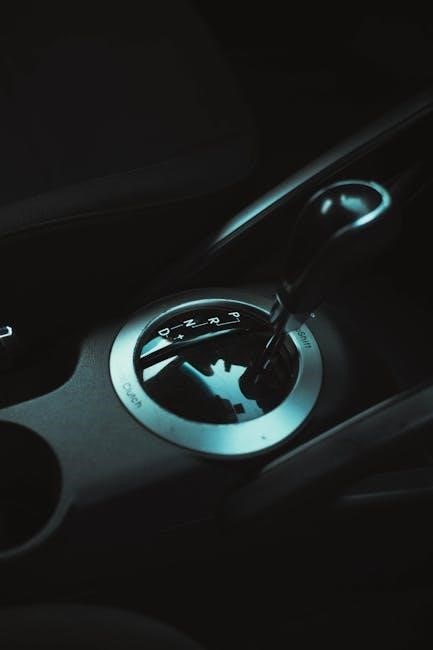
Manual Transmission
Manual transmissions require driver interaction with a clutch pedal and gearshift, offering greater control and efficiency․ They are cost-effective and provide a more engaging driving experience․
History and Evolution of Manual Transmissions
Manual transmissions have a rich history dating back to the early 20th century, evolving from basic systems to sophisticated designs․ The first manual gearboxes emerged in the 1900s, offering drivers more control over speed and torque․ By the 1920s, the H-pattern gearshift became standard, simplifying operation․ Over the decades, advancements like synchronized gears in the 1950s eliminated the need for double-clutching, making manuals more accessible․ Modern manuals feature lightweight materials, improved gear ratios, and smoother shifting mechanisms․ Despite the rise of automatics, manual transmissions remain popular for their driving engagement and efficiency․ Their enduring appeal lies in their simplicity, reliability, and connection to the driving experience․
How a Manual Transmission Works
A manual transmission operates by connecting and disconnecting the engine from the gearbox using a clutch․ When the driver presses the clutch pedal, it disengages the engine’s power from the transmission, allowing the driver to shift gears manually․ The gearshift, connected to the gearshaft, selects the desired gear, while bearings and synchromesh mechanisms ensure smooth transitions between gears․ Once the correct gear is selected, releasing the clutch pedal gradually reconnects the engine to the transmission․ This process requires driver input and coordination between the clutch pedal, gearshift, and accelerator for smooth acceleration and control․ The system relies on mechanical simplicity and driver engagement to deliver precise power delivery and efficiency․
Advantages of Manual Transmissions
Manual transmissions offer several advantages, including better fuel efficiency, lower purchase and maintenance costs, and increased driver control․ They provide a more direct connection between the driver and the vehicle, enhancing the driving experience․ Manuals are also lighter and simpler in design, reducing the overall weight of the car and improving performance․ Additionally, manual transmissions are less prone to mechanical failure compared to complex automatic systems, making them more reliable in the long run․ For drivers who enjoy engaging with their vehicle, manuals offer a sense of mastery and satisfaction․ Overall, manual transmissions are a cost-effective, fuel-efficient, and driver-focused choice for many motorists․
Disadvantages of Manual Transmissions
Manual transmissions require more driver effort, as constant use of the clutch and gearshift is necessary, especially in heavy traffic or hilly terrain․ This can lead to driver fatigue on long journeys․ Additionally, manual transmissions have a steeper learning curve, making them less accessible for inexperienced drivers․ In stop-and-go traffic, the frequent use of the clutch pedal can become tiresome․ Furthermore, manual transmissions may not be as smooth in low-speed maneuvers, such as parking or crawling in traffic, compared to automatics․ While manuals offer better fuel efficiency, modern automatics, especially dual-clutch transmissions, are closing the gap, making manuals less advantageous in some scenarios․ Overall, manual transmissions demand more skill and physical engagement, which may not appeal to all drivers․
Maintenance Tips for Manual Transmissions
Regular maintenance is essential to extend the life of a manual transmission․ Check the transmission fluid periodically, as low levels or dirty fluid can lead to premature wear․ Inspect the clutch pedal for proper alignment and adjust it if necessary to prevent uneven wear on the clutch plate․ Avoid riding the clutch, as this can cause excessive heat and damage to the clutch and pressure plate․ Replace the clutch cable or hydraulic system if you notice signs of wear or leaks․ Listen for unusual noises during shifting, as they may indicate worn synchronizers or bearings․ Finally, consider replacing the transmission fluid every 30,000 to 60,000 miles to keep the gears lubricated and functioning smoothly․
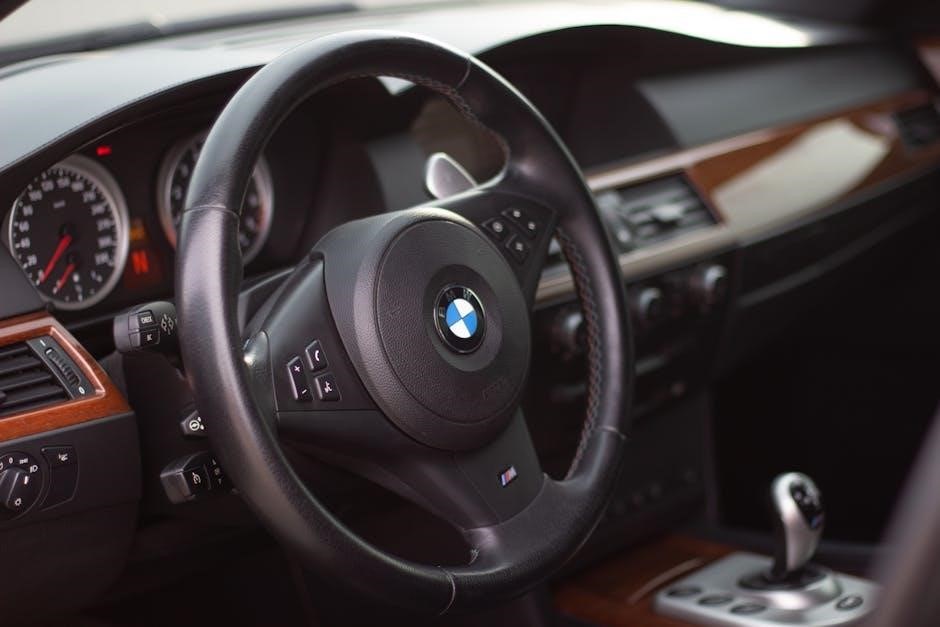
Automatic Transmission
Automatic transmissions combine efficiency and convenience, using hydraulic systems to shift gears automatically․ They offer smooth acceleration and ease of use, making them popular in modern vehicles worldwide․
History and Development of Automatic Transmissions
The development of automatic transmissions began in the 1930s, with the first semi-automatic systems emerging․ However, the first fully automatic transmission, the General Motors Hydra-Matic, debuted in 1939․ Over the decades, automatic transmissions evolved to become smoother, more efficient, and widely adopted․ The 1950s saw the rise of torque converters, improving performance and reliability․ By the 1980s, electronic controls were introduced, enhancing shifting precision and fuel efficiency․ Modern automatic transmissions now feature advanced technologies like continuously variable transmissions (CVT) and multi-speed systems, offering improved performance and reduced emissions․ This evolution reflects the automotive industry’s commitment to innovation and driver convenience․
How an Automatic Transmission Works
An automatic transmission operates by using a torque converter to transfer engine power to the gearbox, eliminating the need for manual clutch engagement․ The system relies on a complex arrangement of planetary gear sets, sensors, and electronic controls to automatically adjust gear ratios based on driving conditions․ Hydraulic pressure, controlled by solenoids, engages and disengages clutches and bands to facilitate smooth shifts․ Sensors monitor throttle position, vehicle speed, and engine load to determine the optimal gear․ This seamless process allows the vehicle to accelerate and decelerate without driver intervention, providing ease of use and convenience compared to manual transmissions․
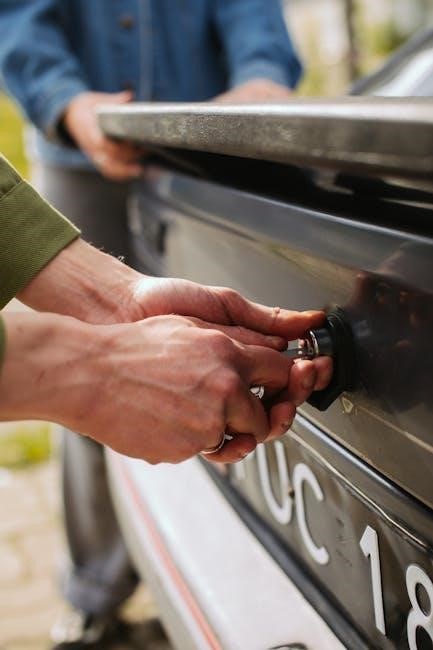
Advantages of Automatic Transmissions
Automatic transmissions offer unmatched convenience, especially in heavy traffic or hilly terrains, as they eliminate the need for constant manual gear shifting․ This reduces driver fatigue and stress, making long drives more comfortable․ Automatics are also ideal for new drivers, as they simplify the learning process by removing the coordination required for clutch and gear operation․ Additionally, automatic transmissions provide smooth acceleration and deceleration, enhancing ride quality․ They are also more accessible for drivers with physical constraints․ While they may slightly reduce fuel efficiency compared to manuals, modern advancements have narrowed this gap․ Overall, automatics prioritize ease of use and seamless operation, making them a preferred choice for many drivers worldwide․
Disadvantages of Automatic Transmissions
Automatic transmissions are generally heavier and less fuel-efficient than manual transmissions, which can increase fuel costs over time․ They are also more expensive to purchase upfront and maintain, as their complex systems require specialized repair expertise․ Automatics generate more heat during operation, often requiring additional cooling mechanisms, which adds to their cost and complexity․ Furthermore, automatic transmissions can lack the driver engagement and control offered by manuals, making them less appealing to enthusiast drivers․ In stop-and-go traffic, automatics may experience increased wear on the torque converter and transmission fluid, potentially reducing their lifespan․ Overall, while convenient, automatics trade off cost, efficiency, and driver involvement for ease of use․
Maintenance Tips for Automatic Transmissions
Regular maintenance is crucial for extending the life of an automatic transmission․ Always check the transmission fluid level and condition, ensuring it’s clean and at the recommended level․ Use the correct type of fluid specified by the manufacturer, as incorrect fluids can damage the system․ Avoid extreme temperatures and heavy towing, which can strain the transmission․ Refrain from aggressive driving, such as rapid acceleration or frequent stop-and-go traffic, as this can cause excessive wear․ Inspect the transmission pan for leaks and ensure the cooler lines are functioning properly․ Never shift gears while the vehicle is moving, and always come to a complete stop before reversing․ Finally, follow the manufacturer’s recommended service intervals for fluid changes and system checks to maintain optimal performance․
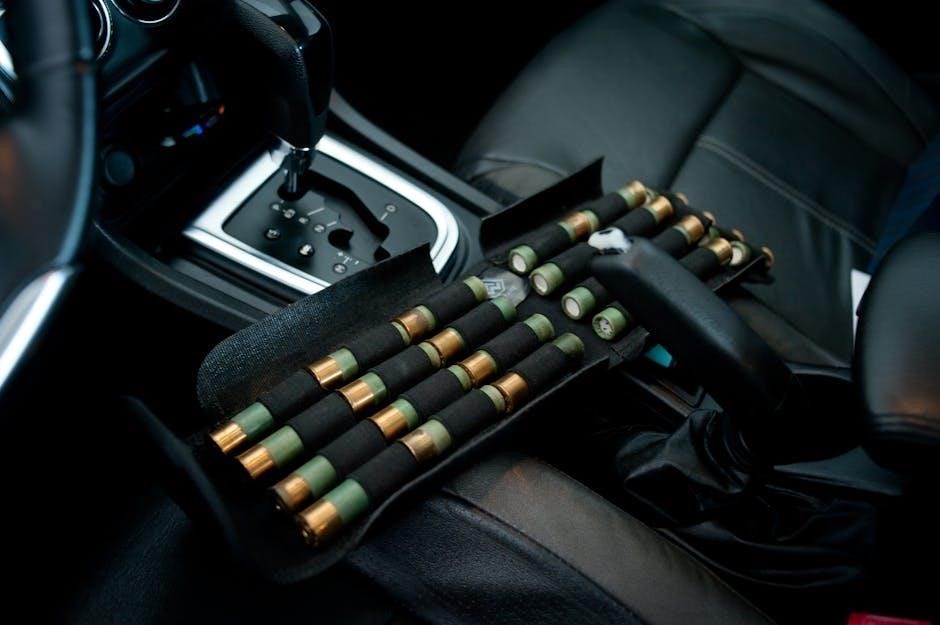
Dual-Clutch Transmission (DCT)
A Dual-Clutch Transmission (DCT) combines the efficiency of manual transmissions with the convenience of automatics, using two clutches for fast, seamless gear shifts, enhancing performance and fuel efficiency․
What is a Dual-Clutch Transmission?
A Dual-Clutch Transmission (DCT) is a hybrid system that combines the efficiency of a manual transmission with the convenience of an automatic․ It uses two clutches to manage odd and even gears, allowing for rapid, seamless shifts without interrupting power delivery․ This design enables faster acceleration and improved fuel efficiency compared to traditional automatics; The clutches are controlled by advanced electronics and hydraulics, eliminating the need for driver input․ DCTs are popular in high-performance vehicles due to their precise control and smooth operation․ They offer the best of both worlds, blending the engagement of a manual with the ease of an automatic, making them ideal for drivers seeking balance between performance and practicality․
History of Dual-Clutch Transmissions
The concept of dual-clutch transmissions (DCTs) dates back to the 1930s, when French engineer Adolphe Kégresse explored automated gear shifting․ However, his ideas were delayed due to World War II․ The modern DCT emerged in the 1980s, with automakers like Volkswagen developing systems like the Direct-Shift Gearbox (DSG)․ These early DCTs aimed to combine the efficiency of manual transmissions with the convenience of automatics․ Over time, advancements in electronics and hydraulics refined the technology, making DCTs faster and smoother․ Today, DCTs are widely used in high-performance vehicles, offering a balance between driver engagement and automatic ease, revolutionizing the automotive industry with their innovative approach to gear shifting․
How a Dual-Clutch Transmission Works
A dual-clutch transmission (DCT) operates using two clutches, each controlling alternate gears․ One clutch manages odd-numbered gears, while the other handles even-numbered gears․ During driving, the system pre-selects the next gear, allowing instantaneous shifts by engaging the appropriate clutch․ This setup eliminates the need for a torque converter, found in traditional automatics, and enables rapid, seamless transitions․ Hydraulic or electronic controls orchestrate the clutch operations, ensuring smooth power delivery without interrupting traction․ The result is a system that combines the efficiency and driver engagement of a manual transmission with the convenience of an automatic, making it ideal for performance-oriented vehicles seeking optimal acceleration and responsiveness․
Pros and Cons of Dual-Clutch Transmissions
Dual-clutch transmissions (DCTs) offer fast and smooth gear shifts, improving performance and fuel efficiency․ They are lightweight, making them ideal for high-performance vehicles․ DCTs provide the control of a manual transmission with the convenience of an automatic, appealing to enthusiasts․ However, they can be complex and costly to maintain․ Issues like jerky low-speed operation and reliability concerns have been reported․ DCTs also require specialized fluids and servicing, adding to ownership costs․ While they excel in performance scenarios, they may not suit everyday driving or heavy vehicles․ Overall, DCTs balance efficiency and power but come with trade-offs in complexity and practicality․
Cars That Use Dual-Clutch Transmissions
Dual-clutch transmissions (DCTs) are widely used in high-performance and sport-oriented vehicles․ Models like the Volkswagen GTI, Hyundai Elantra N, and BMW M series feature DCTs for rapid gear shifts․ Porsche’s PDK system, a type of DCT, is found in the 911 and other performance cars․ Additionally, Honda motorcycles and select Mazda models utilize DCT technology․ These transmissions are favored in vehicles requiring quick acceleration and seamless power delivery․ DCTs are also used in luxury cars for a blend of efficiency and performance; Their adoption continues to grow, making them a common choice for automakers seeking to optimize both speed and fuel economy in modern vehicles․
Maintenance Tips for Dual-Clutch Transmissions
Regular maintenance is essential for extending the life of a dual-clutch transmission (DCT)․ Check the transmission fluid level periodically and replace it as recommended by the manufacturer․ Use high-quality synthetic fluid designed for DCTs to ensure optimal performance․ Avoid aggressive driving habits, such as rapid acceleration or deceleration, as they can strain the clutches․ Monitor clutch wear and replace worn components promptly․ Keep the transmission software updated, as manufacturers often release improvements․ Avoid idling for long periods, as this can overheat the system․ Finally, avoid shifting gears excessively in extreme temperatures to prevent premature wear․ Proper care ensures smooth operation and longevity of the DCT․
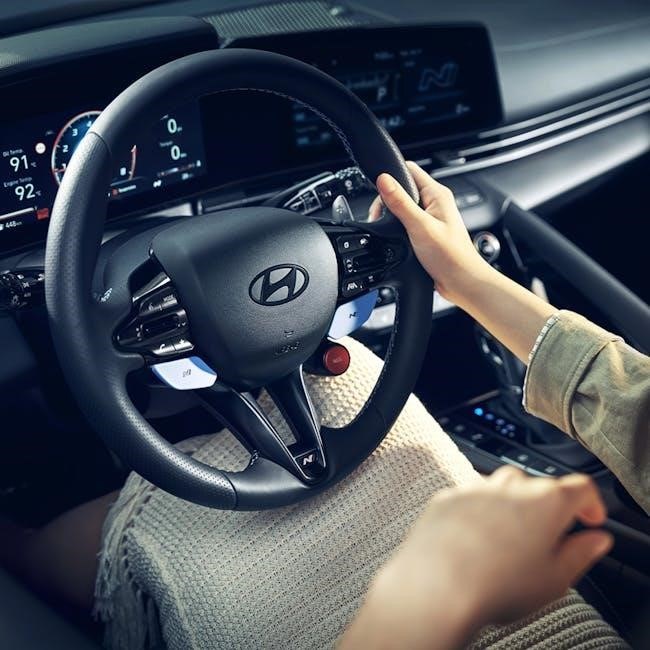
Comparison Between Manual and Automatic Cars
Manual cars require driver engagement with clutch and gearshift, offering control and efficiency, while automatics provide convenience and ease of use, ideal for urban driving conditions․
Fuel Efficiency Comparison
Manual transmissions have historically offered better fuel efficiency due to their direct control over gear shifts, optimizing engine performance․ Automatics, while improved with modern technology like dual-clutch transmissions, often lag slightly in efficiency․ The ability to manually adjust gears ensures minimal energy loss, especially in city driving or hilly terrain․ Automatics, however, have closed the gap with advancements in torque converters and gear programming․ Dual-clutch transmissions, combining manual-like efficiency with automatic convenience, further bridge this divide․ Ultimately, the choice depends on driving habits and preferences, as both systems can deliver strong fuel economy in their optimal conditions․ The efficiency difference continues to narrow, making both options viable for eco-conscious drivers․
Driving Experience: Manual vs․ Automatic
Manual transmissions provide a more engaging driving experience, offering direct control over gear shifts and engine RPMs․ This connection enhances the driver’s ability to navigate challenging roads and delivers a sense of mastery․ In contrast, automatic transmissions prioritize convenience, allowing drivers to focus solely on steering and acceleration without manual intervention․ The smooth, seamless shifts of automatics are particularly advantageous in heavy traffic or urban environments․ Dual-clutch transmissions (DCTs) blend these worlds by automating shifts while maintaining the responsiveness of a manual system․ They enable rapid gear changes, ideal for high-performance driving, without the need for a clutch pedal․ Each system caters to different preferences, whether it’s the thrill of manual control or the ease of automatic operation․
Cost Comparison: Manual vs․ Automatic
Manual transmissions are generally more affordable to purchase upfront compared to automatics․ They are often less complex in design, which reduces production costs and makes them more accessible to budget-conscious buyers․ However, automatic transmissions, especially dual-clutch systems, tend to have higher initial costs due to their advanced technology and components․ Maintenance costs over the long term also vary; manuals typically require less frequent and less expensive servicing, while automatics may incur higher repair bills, especially for complex systems like DCTs․ Additionally, fuel efficiency differences can influence long-term costs, with manuals often providing better mileage in certain driving conditions․ Balancing these factors helps drivers decide which option aligns best with their financial priorities and lifestyle needs․
Reliability and Longevity: Manual vs․ Automatic
Manual transmissions are often considered more reliable and longer-lasting due to their simpler mechanical design, with fewer components prone to failure․ They require less complex maintenance and are less likely to experience catastrophic issues compared to automatics․ Automatic transmissions, especially dual-clutch systems, are more complex and can be prone to wear and tear over time, particularly in high-stress driving conditions․ However, modern automatics have improved significantly in reliability․ Manuals generally have a longer lifespan if properly maintained, while automatics may require more frequent servicing․ Ultimately, the choice depends on driving habits and priorities, as both systems can provide years of reliable service when cared for appropriately․
Resale Value: Manual vs․ Automatic
The resale value of manual and automatic cars varies depending on regional preferences and market demands․ Manual transmissions often retain higher resale value in markets where driving enthusiasts are prevalent, as they are prized for their control and driving experience․ Automatics, however, are more popular in urban areas and regions with heavy traffic, making them easier to sell․ Dual-clutch transmissions, while sought after in high-performance vehicles, can sometimes face skepticism due to past reliability issues․ Ultimately, resale value depends on buyer preferences, vehicle type, and local driving habits․ Manuals may hold an edge in niche markets, while automatics dominate broader, more practical segments․
